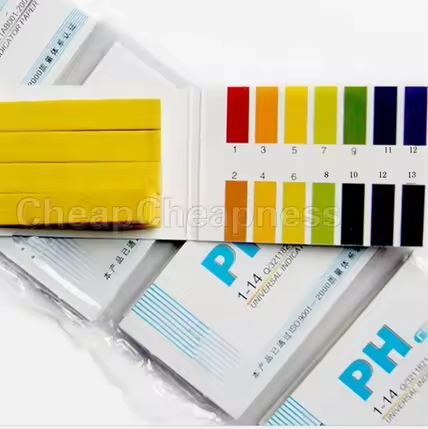Concept of Acid and Base: A Fundamental Overview
{getToc} $title={Table of Contents} $count={Boolean} $expanded={Boolean}
Classical (Arrhenius) Concept
The Arrhenius concept, developed by Svante Arrhenius in the late 19th century, is one of the earliest theories used to define acids and bases.
Acids: According to the Arrhenius concept, an acid is a substance that, when dissolved in water, increases the concentration of hydrogen ions (H⁺) in the solution. For example, hydrochloric acid (HCl) dissociates in water as follows:
Bases: A base, in the Arrhenius concept, is a substance that, when dissolved in water, increases the concentration of hydroxide ions (OH⁻) in the solution. For example, sodium hydroxide (NaOH) dissociates in water as follows:
This theory is useful for understanding reactions that occur in aqueous solutions but is limited because it only applies to substances that dissolve in water.
Arrhenius Concept Examples
Acids:
- Hydrochloric Acid (HCl): Dissociates in water to produce H⁺ and Cl⁻ ions.
HCl → H + + Cl − - Sulfuric Acid (H₂SO₄): Dissociates in water to produce two H⁺ ions and one sulfate ion (SO₄²⁻).
H 2 SO 4 → 2 H + + SO 4 2 − - Nitric Acid (HNO₃): Dissociates in water to produce H⁺ and nitrate ions (NO₃⁻).
HNO 3 → H + + NO 3 − - Acetic Acid (CH₃COOH): Partially dissociates in water to produce H⁺ and acetate ions (CH₃COO⁻).
CH 3 COOH ↔ H + + CH 3 COO − - Phosphoric Acid (H₃PO₄): Dissociates in water to produce H⁺ and dihydrogen phosphate ions (H₂PO₄⁻).
H 3 PO 4 ↔ H + + H 2 PO 4 −
- Bases:
- Sodium Hydroxide (NaOH): Dissociates in water to produce Na⁺ and OH⁻ ions.
NaOH → Na + + OH − - Potassium Hydroxide (KOH): Dissociates in water to produce K⁺ and OH⁻ ions.
KOH → K + + OH − - Calcium Hydroxide (Ca(OH)₂): Dissociates in water to produce Ca²⁺ and OH⁻ ions.
Ca(OH) 2 → Ca 2 + + 2 OH − - Ammonium Hydroxide (NH₄OH): Dissociates in water to produce NH₄⁺ and OH⁻ ions.
NH 4 OH ↔ NH 4 + + OH − - Barium Hydroxide (Ba(OH)₂): Dissociates in water to produce Ba²⁺ and OH⁻ ions.
Ba(OH) 2 → Ba 2 + + 2 OH −
Brønsted-Lowry Concept
The Brønsted-Lowry concept, proposed by Johannes Brønsted and Thomas Lowry in 1923, expanded the definitions of acids and bases beyond aqueous solutions.
Acids: A Brønsted-Lowry acid is any substance that can donate a proton (H⁺) to another substance. This definition is broader than the Arrhenius definition because it applies to reactions in solvents other than water and to gas-phase reactions. For example, in the reaction between hydrochloric acid and ammonia:
Here, HCl acts as a Brønsted-Lowry acid by donating a proton to ammonia (NH₃).
- Bases: A Brønsted-Lowry base is any substance that can accept a proton. In the reaction above, ammonia (NH₃) acts as a Brønsted-Lowry base by accepting a proton to form ammonium (NH₄⁺).
This concept is more versatile than the Arrhenius concept and applies to a wider range of chemical reactions.
Brønsted-Lowry Concept Examples
Acids:
- Hydrochloric Acid (HCl): Donates a proton (H⁺) to water, forming hydronium ions (H₃O⁺).
HCl + H 2 O → H 3 O + + Cl − - Ammonium Ion (NH₄⁺): Donates a proton to water, forming ammonia (NH₃) and hydronium ions.
NH 4 + + H 2 O → NH 3 + H 3 O + - Sulfuric Acid (H₂SO₄): Donates a proton to water, forming hydronium ions and hydrogen sulfate ions (HSO₄⁻).
H 2 SO 4 + H 2 O → H 3 O + + HSO 4 − - Nitric Acid (HNO₃): Donates a proton to water, forming hydronium ions and nitrate ions.
HNO 3 + H 2 O → H 3 O + + NO 3 − - Acetic Acid (CH₃COOH): Donates a proton to water, forming acetate ions and hydronium ions.
CH 3 COOH + H 2 O → CH 3 COO − + H 3 O +
- Bases:
- Ammonia (NH₃): Accepts a proton from water, forming ammonium ions and hydroxide ions.
NH 3 + H 2 O → NH 4 + + OH − - Acetate Ion (CH₃COO⁻): Accepts a proton from water, forming acetic acid and hydroxide ions.
CH 3 COO − + H 2 O → CH 3 COOH + OH − - Hydroxide Ion (OH⁻): Accepts a proton from water, forming water molecules.
OH − + H 2 O → 2 H 2 O - Bicarbonate Ion (HCO₃⁻): Accepts a proton, forming carbonic acid (H₂CO₃).
HCO 3 − + H + → H 2 CO 3 - Water (H₂O): Can act as a base by accepting a proton, forming hydronium ions.
H 2 O + H + → H 3 O +
Lewis Concept
The Lewis concept, introduced by Gilbert N. Lewis in 1923, offers an even broader definition of acids and bases.
Acids: According to the Lewis concept, an acid is any substance that can accept a pair of electrons to form a covalent bond. This definition encompasses many more substances, including those that do not release hydrogen ions. For example, in the reaction between boron trifluoride (BF₃) and ammonia (NH₃):
Boron trifluoride (BF₃) acts as a Lewis acid by accepting a pair of electrons from ammonia.
- Bases: A Lewis base is any substance that can donate a pair of electrons to form a covalent bond. In the reaction above, ammonia (NH₃) acts as a Lewis base by donating a pair of electrons to boron trifluoride.
The Lewis concept is the most general and applies to a wide variety of chemical reactions, not just those involving protons or hydroxide ions.
Conjugate Pairs
Definition: In acid-base chemistry, a conjugate pair consists of two species related by the loss or gain of a proton (H⁺). Specifically, when an acid donates a proton, it forms its conjugate base, and when a base accepts a proton, it forms its conjugate acid.
Conjugate Acid-Base Pairs:
Acid and Its Conjugate Base: When an acid donates a proton, the species left behind is called the conjugate base of that acid.
- Example: For hydrochloric acid (HCl), when it donates a proton, it forms chloride ion (Cl⁻). Hence, HCl and Cl⁻ are a conjugate acid-base pair:
HCl → H + + Cl − Base and Its Conjugate Acid: When a base accepts a proton, the resulting species is its conjugate acid.
- Example: For ammonia (NH₃), when it accepts a proton, it forms ammonium ion (NH₄⁺). Hence, NH₃ and NH₄⁺ are a conjugate acid-base pair:
NH 3 + H + → NH 4 +
Importance of Conjugate Pairs:
- Buffer Solutions: Conjugate acid-base pairs are fundamental in buffer solutions, which resist changes in pH. For instance, a buffer solution contains a weak acid and its conjugate base, or a weak base and its conjugate acid.
- Acid-Base Reactions: In any acid-base reaction, the acid and its conjugate base, or the base and its conjugate acid, are part of the equilibrium.
Amphoteric Substances
Definition: Amphoteric substances are compounds that can act as both acids and bases depending on the conditions. These substances have the ability to either donate or accept a proton.
Examples of Amphoteric Substances:
Water (H₂O): Water can act as both an acid and a base. As an acid, it can donate a proton to form hydroxide ion (OH⁻). As a base, it can accept a proton to form hydronium ion (H₃O⁺):
H 2 O + H + ↔ H 3 O + \text{H}_2\text{O} + \text{H}^+ \leftrightarrow \text{H}_3\text{O}^+
H 2 O ↔ OH − + H +
Hydrogen Carbonate Ion (HCO₃⁻): The hydrogen carbonate ion can act as both an acid and a base. As an acid, it can donate a proton to form carbonate ion (CO₃²⁻). As a base, it can accept a proton to form carbonic acid (H₂CO₃):
HCO 3 − + H + → H 2 CO 3 \text{HCO}_3^- + \text{H}^+ \rightarrow \text{H}_2\text{CO}_3 HCO 3 − → CO 3 2 − + H + \text{HCO}_3^- \rightarrow \text{CO}_3^{2-} + \text{H}^+
Aluminum Hydroxide (Al(OH)₃): Aluminum hydroxide can act as a base by reacting with acids to form aluminum ions and water. It can also act as an acid by reacting with bases to form soluble aluminate ions:
Al(OH) 3 + 3H + → Al 3 + + 3H 2 O \text{Al(OH)}_3 + \text{3H}^+ \rightarrow \text{Al}^{3+} + \text{3H}_2\text{O}
Al(OH) 3 + OH − → [Al(OH) 4 ] − \text{Al(OH)}_3 + \text{OH}^- \rightarrow \text{[Al(OH)}_4]^-
Importance of Amphoteric Substances:
- Chemical Reactions: Amphoteric substances play significant roles in chemical reactions where they can interact with both acids and bases.
- Biological Systems: Many biological systems rely on amphoteric substances to maintain pH balance and to catalyze reactions.
Comparison of Acid-Base Theories
|
Theory |
Acid |
Base |
Examples |
|
Arrhenius |
Produces H⁺ in water |
Produces OH⁻ in water |
HCl (acid), NaOH
(base) |
|
Brønsted-Lowry |
Proton donor
(H⁺) |
Proton
acceptor |
HCl (acid),
NH₃ (base) |
|
Lewis |
Electron pair acceptor |
Electron pair donor |
BF₃ (acid), NH₃ (base) |
You may like of these Acid and Base Kits
Conclusion
Understanding the concept of acids and bases through these different theories provides a comprehensive view of how substances interact in chemical reactions. Each theory has its applications and limitations, but together, they offer a robust framework for analyzing and predicting chemical behavior. For senior high school students, mastering these concepts is crucial for success in advanced chemistry studies.
For further exploration, consider these resources:
This comprehensive understanding of acids and bases will be vital as students' progress into more complex areas of chemistry.
Affiliate Disclosure
This article contains affiliate links. If you purchase through these links, we may earn a small commission at no additional cost to you. Thank you for supporting our work!




